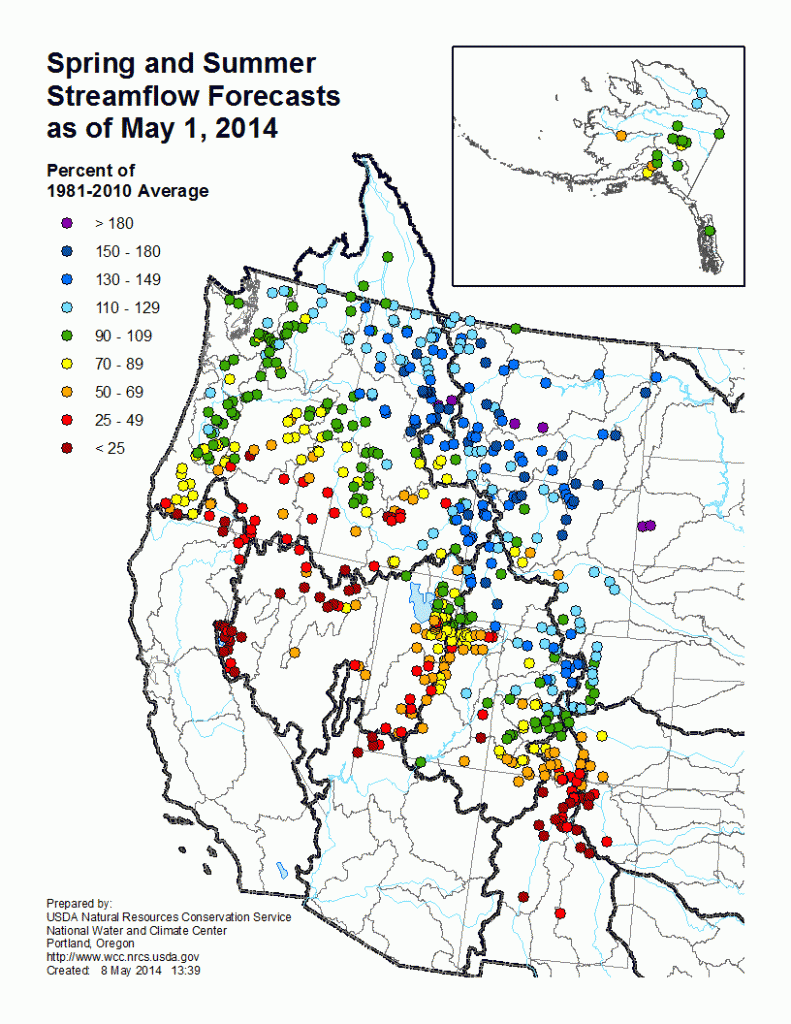April storms delivered a mix of rain and snow to the northern half of the West but didn’t provide much relief for the dry southern half, according to data from the U.S. Department of Agriculture’s (USDA) May 2014 water supply forecast.
Washington, most of Idaho, Montana, Wyoming, and the northern parts of Colorado and Utah, are expected to have near normal or above normal water supplies, according to forecasts from the Natural Resources Conservation Service’s National Water and Climate Center (NWCC). Streamflows that are far below normal are forecast for the southern parts of Oregon and Utah, southwestern Idaho, California, Arizona, New Mexico and western Nevada.
 Many of these areas are in the nearly 500 counties experiencing drought across the country, 57 of them in California alone, according to USDA disaster designations.
Many of these areas are in the nearly 500 counties experiencing drought across the country, 57 of them in California alone, according to USDA disaster designations.
Snowpack generally peaks in early April, and then begins to melt. Forecasters will continue to monitor conditions in preparation for the June 1 outlook, according to NWCC hydrologist Cara McCarthy. She said the rate of snowmelt in Montana and Wyoming will be especially important, because the record snow in some basins in those areas creates flooding potential.
“These areas will be most vulnerable if snow melts rapidly during a hot spell, or if there’s extreme rain while the streams are swollen with snowmelt,” McCarthy said. “We’re hoping for a slow, consistent melt that will reduce the risk of flooding.”
In western states where snowmelt accounts for the majority of seasonal water supply, information about snowpack serves as an indicator of future water availability. Streamflow in the West consists largely of accumulated mountain snow that melts and flows into streams as temperatures warm into spring and summer. USDA scientists analyze the snowpack, air temperature, soil moisture and other measurements taken from remote sites to develop the water supply forecasts.
The NWCC water supply forecast is part of a group of USDA efforts to improve public awareness of and to help mitigate the impacts of climate change, including drought and other extreme weather events. Through the creation of the National Drought Resilience Partnership, launched as part of the President’s Climate Action Plan, federal agencies are working closely with states, tribes and local government to develop a coordinated response to drought.
Since 1939, USDA has conducted snow surveys and issued regular water supply forecasts.
View the May Snow Survey and Water Supply Forecast map or view information by state.

Leave a Comment